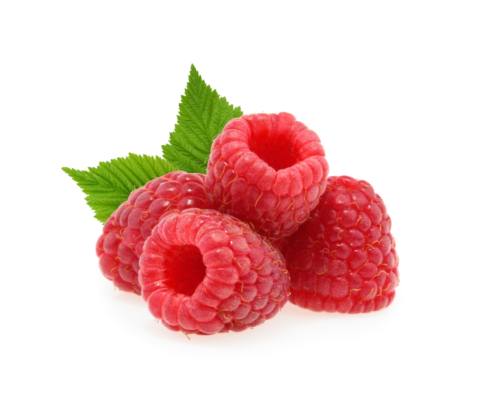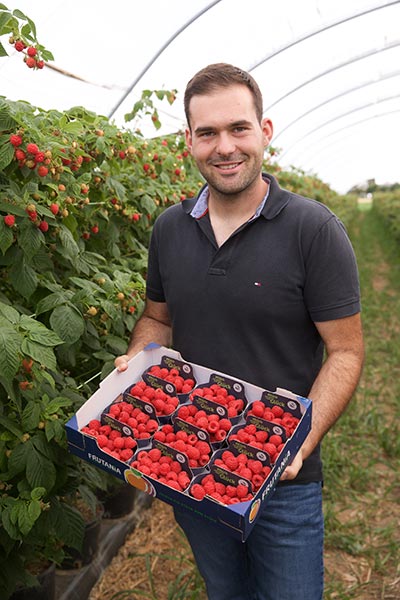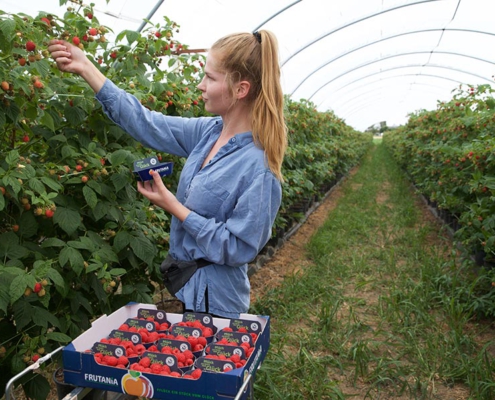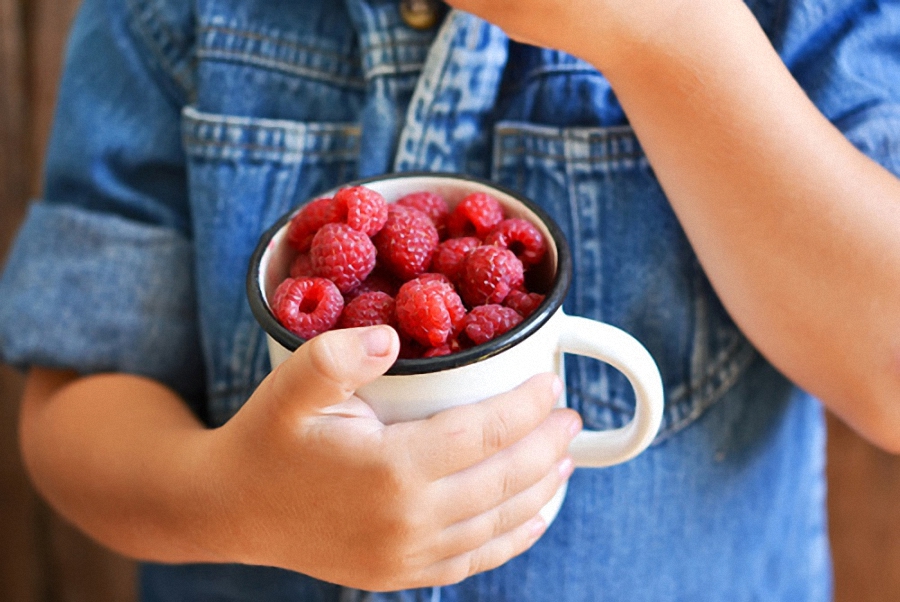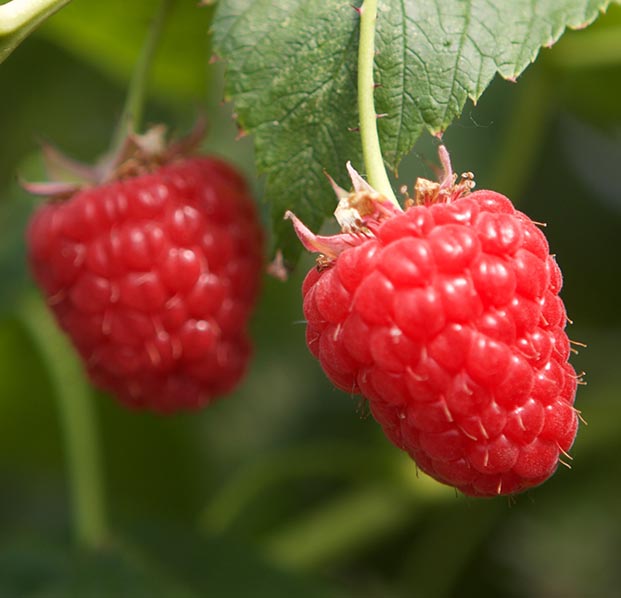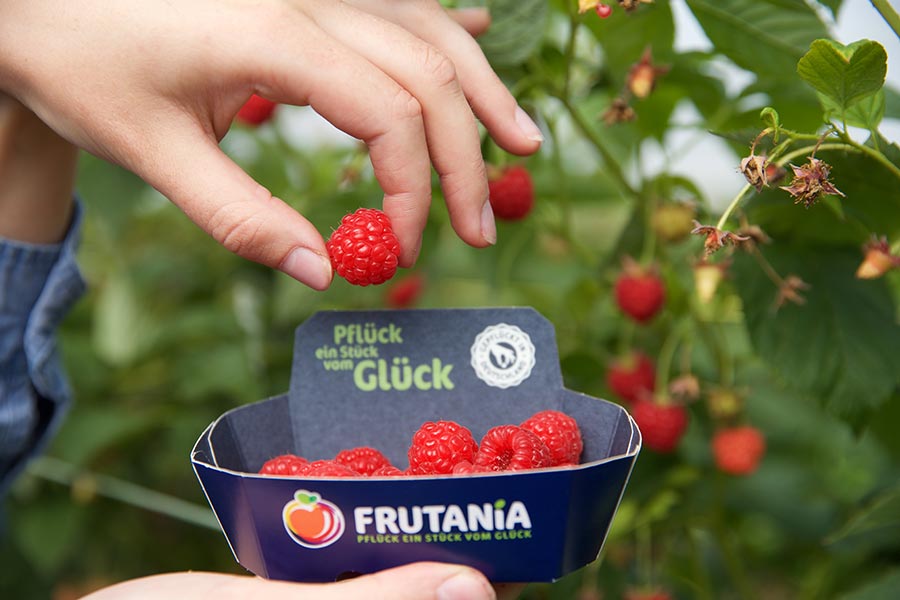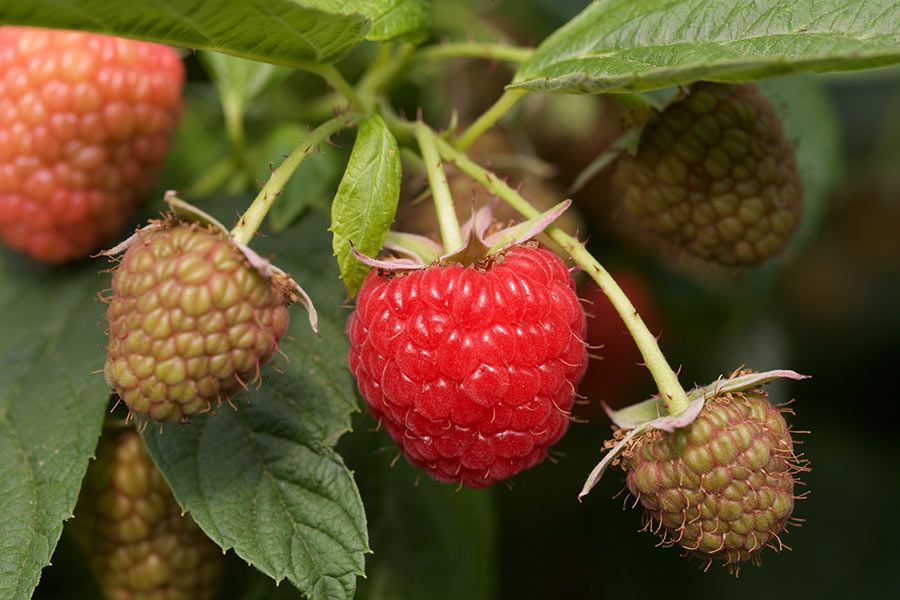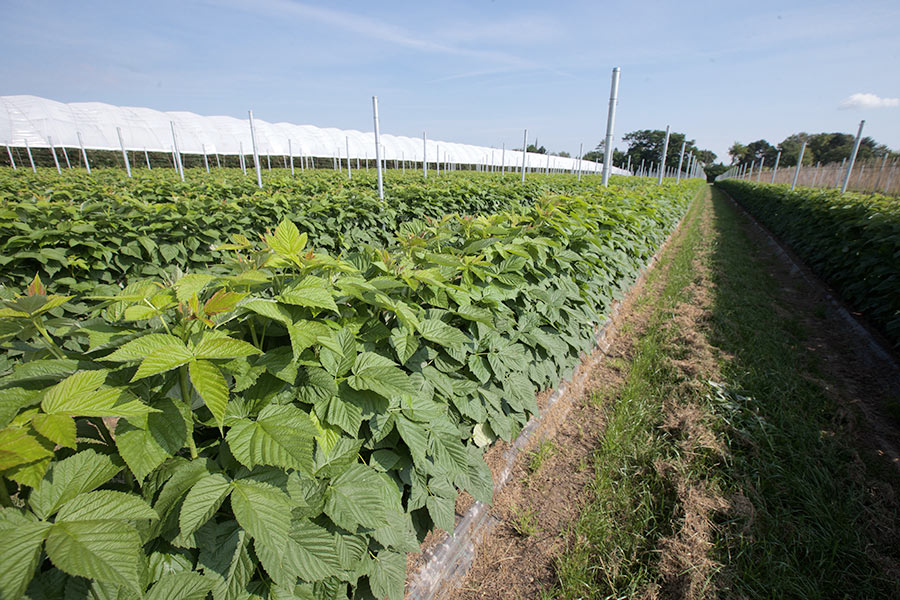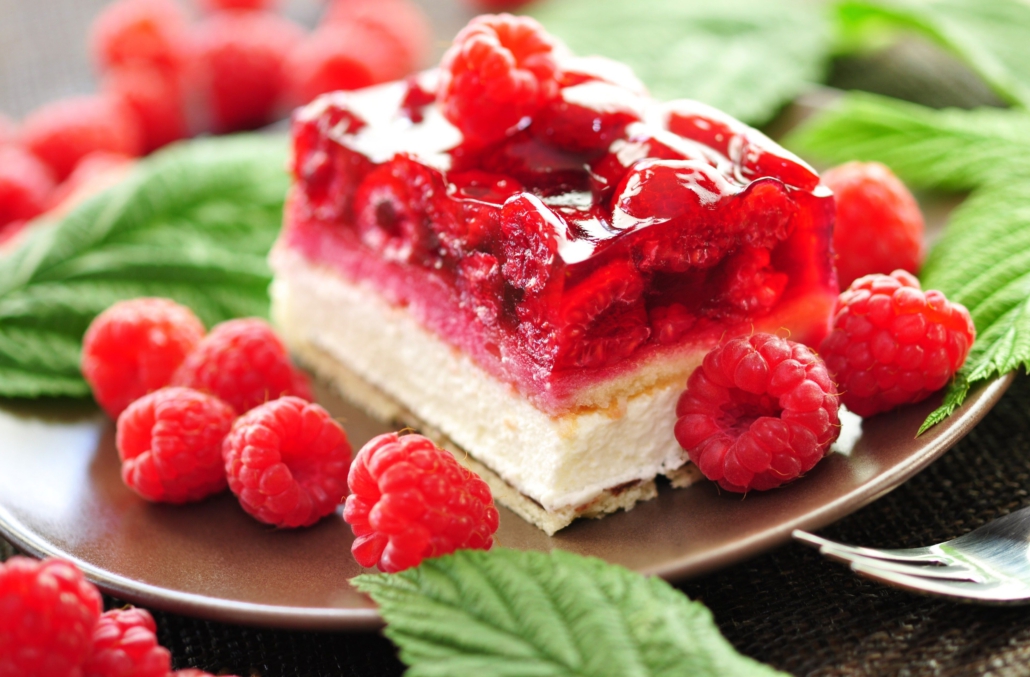Our raspberries
Our raspberries are pink-red, large fruit, wonderfully sweet, soft but not too soft and beautifully shiny – a true happiness!
Constantin Meller, one of our growers for raspberries:
“Happiness for me is following all the steps of vegetation, seeing how crops develop and grow from planting to harvest. It makes me happy to see what you’ve accomplished and how your work has paid off. “
The fruit farm of family Meller is located in Pulheim in the Rhineland and exists already since 1924 and in the fourth generation. Here are grown asparagus, blackberries and mainly raspberries and strawberries.
Cultivation methods
Raspberry plants are planted annually as so-called long canes, which were already grown in the previous year. In the foil tunnels, the sensitive plants and fruits are protected from rain and strong sunlight.
Harvest
The domestic raspberry season begins at the end of May and continues until about mid-October. About 70 days after planting the long canes, harvesting can begin. Since the lateral branches of the plant are very fragile, they are supported by wire ropes to prevent them from snapping off.
read more
Picking
Ripe raspberries are picked very carefully and individually by hand. They must not be pressed, otherwise they will spoil quickly.
Maturity levels
Depending on the weather conditions, new raspberries ripen steadily from the beginning of harvest until the end of the season.
Our varieties
Sapphire | Diamond Jubilee
Exclusive raspberry varieties from Frutania
Since 2016, Frutania has had exclusive cultivation and marketing rights for Germany to the raspberry varieties “SAPPHIRE” and “DIAMOND JUBILEE”. The varieties are characterized by their outstanding taste, shelf life and fruit sizes and are grown exclusively in protected cultivation.
Frutania raspberries from German cultivation are available from: May – October
Consumer tips
Purchasing
You should buy only perfect and ripe fruit. Since raspberries do not come into contact with soil, washing is not strictly necessary.
Storage
Raspberries are delicate and should be consumed one or two days after purchase. They can be well preserved in the form of jams, jellies and sauces or as dried fruits. Even when freezing the pulp, the flavor is preserved.
Preparation
For many, a sumptuously topped raspberry tart is the finest way to enjoy the fine fruit. Ice cream, yogurt or quark dishes and fruit salads also get that certain noble something with raspberries. Ripe raspberries can also be used to make delicious jams or jellies.
Raspberries are also popular in savory cuisine and flavored salads, vinegars or fine sauces to poultry and veal.
The raspberry
Small encyclopedia
Bright red color, beguiling fragrance and plenty of thorns on the branches – the similarities of raspberries with roses is based on the direct botanical relationship. The change from its much smaller ancestor, the forest raspberry, to its current size, raspberry owes modern methods of breeding and the resulting varieties.
The raspberry is extremely beneficial to health and tastes best pure, on cakes, as jam or in dairy products.


